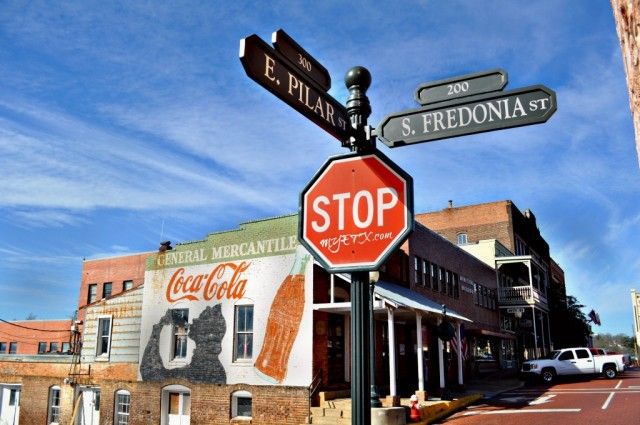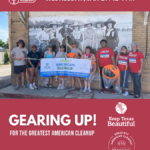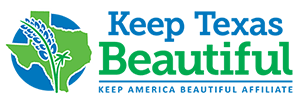Even with an MBA, I found myself stumped when asked as a volunteer to explain the value of a playground in economic terms. It’s difficult to reconcile the beauty of a park placed within an ancient pecan grove, a dirt trail that follows a natural creek bed, with a new slide on aging playground equipment. But I know that kids love playgrounds, I know families love them and I know those families won’t move to my town if they don’t have public recreational places to take their kids.
With all of these things, litter is a major factor as well. It doesn’t matter how beautiful our parks and playgrounds are if they are littered with trash. According to Keep America Beautiful
litter reduces the value of real estate, deters a customer from entering a business or a new employer from locating to community.
Litter negatively impacts property values. 93% of homeowners say a littered neighborhood decreases their assessment of a home’s value and influences their decision to purchase a property. In turn, the presence of litter in a community decreases property values by a little over 7%.
Breakdown Direct Costs of Litter for your Community
In the United States, litter clean up costs more than $11.5 billion each year, with 80% of that cost falling on businesses at $9.1 billion. Litter removal is often a hidden cost within employee expenses or other projects, making it difficult to determine the actual cost to local governments and businesses. Educational institutions spend approximately $241 million annually for litter clean up. Similar to local governments, litter costs are often not included as a budget line item, making it difficult to determine the time spent on cleanup in hallways, cafeterias, and sports facilities.
In 2009, Keep America Beautiful measured the per capita cost of litter in the United States at $38. Accounting for more recent, individual studies and current market trends, litter is now estimated to cost $42 per person. Keep in mind that because litter costs are not often itemized and tracked on a balance sheet, this is most likely a low estimate.
You can use this information to determine the costs of litter in your community compared to the national scale. For example, if the population of your community is 35,000, at $42 per person, local litter clean up costs in your community would be an estimated $1.47 million annually, with 80% of that cost falling on businesses at $1.176 million.
Unique features in your community
Consider the traits that set your community apart from other communities. My town of Nacogdoches is a college town, home to Stephen F. Austin State University. A 2017 economic impact study showed that the university generated 4000 employees for the city of Nacogdoches due to expenditures from students, faculty, staff and visitors.
About 11,500 students attend SFA. Remember that 93% of homeowners believe that a littered community will negatively impact property values – when students and potential professors are touring and visiting SFA and considering if Nacogdoches will be their home, it is imperative that the town itself and campus are well-kept and attractive. Attracting students and increasing enrollment is essential to growing the economy.
How does your affiliate benefit economic development?
Litter Abatement – By hosting clean ups like The Great America Cleanup, Don’t mess with Texas® Trash Off and TxDOT Adopt-a-Highway Cleanups, volunteers remove litter from public spaces, actively working to maintain property values in their community. By calculating the cost benefit ratio of your events and programs, you can show the value adding traits of your affiliate.
Keep Nacogdoches Beautiful (KNB) volunteers maintain two litter free festivals in downtown Nacogdoches, the Texas Blueberry Festival and the Nine Flags Christmas Festival. During the Texas Blueberry Festival, attended by 22,000 people, KNB removes 17,000 pounds of litter and waste from the downtown area. This activity saves the City of Nacogdoches at least $3000 in clean up costs for the one day festival. It also protects storefront and property owners from litter related expenditures and lost sales due to low customer traffic because remember, people are less likely to enter a store if it is in a littered area.
Education in Schools – The quality of schools impacts economic development. According to the Reform Support Network
, community involvement and support for schools enhances the success of the students and the schools. Affiliates that contribute to education through school programs, school gardens, grants or curriculum, like the Keep America Beautiful Waste in Place curriculum, demonstrate a community investment in the success of local schools.
Recycling Promotion – Working toward an efficient recycling program strengthens a community’s ability to generate a return on recycling.
Reward Businesses for Beautification Initiatives – Every year, Keep Nacogdoches Beautiful awards the Landscape Leadership Awards to companies that go above and beyond in their beautification projects. Last year’s award recipients were: Charles Pool Real Estate – North Village Market, G Patterson Photography Studio and Gallery and The Fredonia Hotel.
How Does the Community use Your Affiliate to attract new business?
Larissa Philpot, Nacogdoches Economic Development Corporation President and CEO said, “What sets Stagecoaches apart from other cities our size is our beauty, natural landscape and character.” Businesses are looking at quality of life – to determine quality of life, they look at the beauty of our town, the people that care about the town and the people in the town that are actively trying to make it look that way. Nacogdoches is lucky to have volunteers who care about the cleanliness of our city, who are hosting cleanup events and making a difference in the quality of life. The actions of our volunteer community leaders directly impact economic development in Nacogdoches.
How do your community builders impact your city?
Written by Katie Blevins, Coordinator of Promotions and Sponsorships for Campus Recreation at Stephen F. Austin State University
Katie recently spent more than 2 years as the Executive Director of Keep Nacogdoches Beautiful. In her new role, she continues to support economic development through her engagement and advocacy of KNB and KTB through Stephen F. Austin and the surrounding community!





